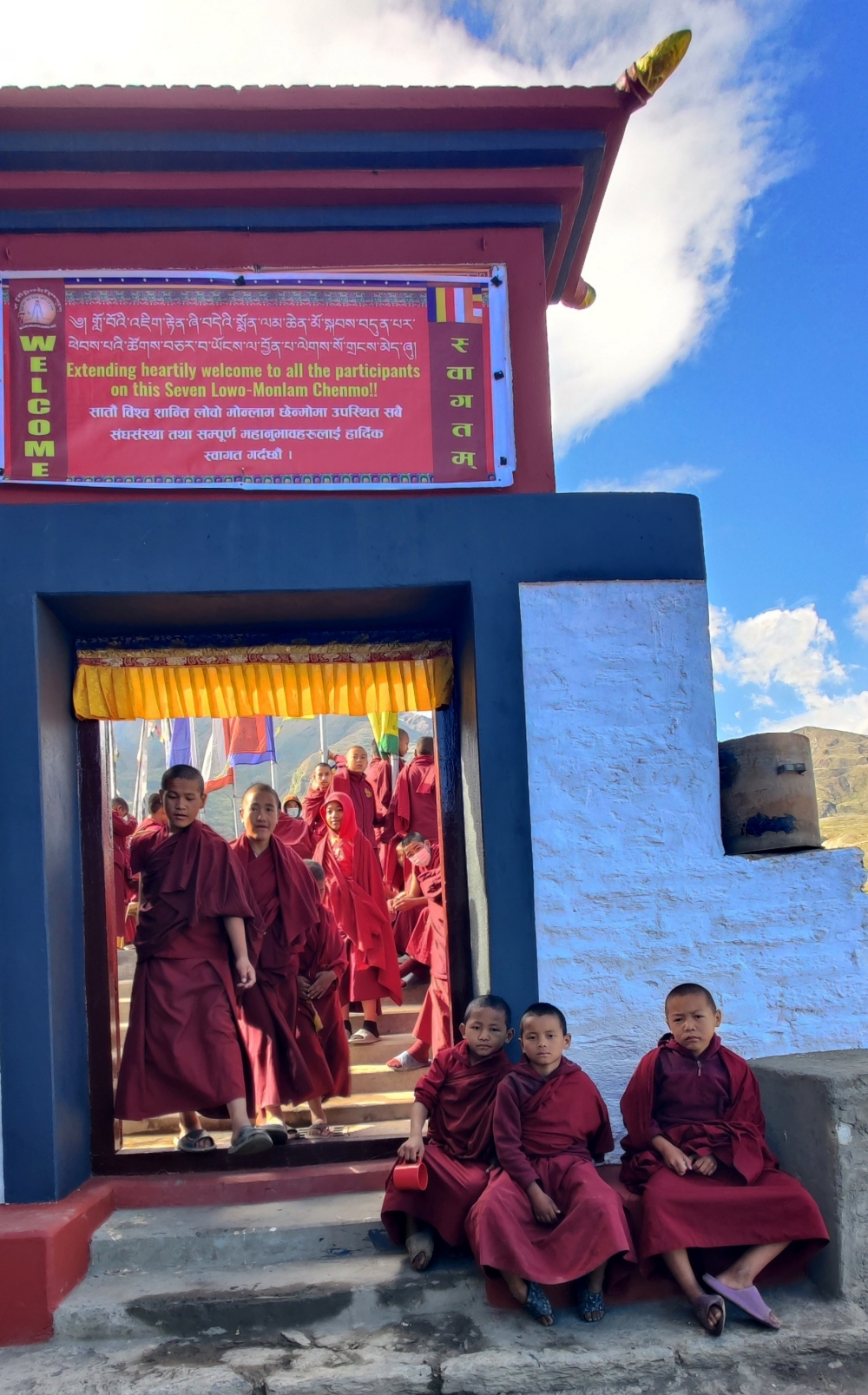A million mantras in Mustang
Monks attend the Lo Monlam Chenmo prayer vigil dedicated to the birth and enlightenment of the BuddhaEvery year in the first month of the Tibetan calendar, devotees observe the ritual of Lo Monlam Chenmo within the holy month of Saga Dawa to mark the birth, enlightenment, and parinirvana of the Buddha.
Lo Monlam Chenmo literally translates into the Great Prayer Festival of Mustang and earlier this month was observed for a week during which devotees chanted mantras over a million times for the long life and wellbeing of all sentient beings, for the continuation, survival and spread of Dharma, and for world peace.

The annual prayer vigil drew 578 monks and nuns and hundreds of local people to the monastery town of Jharkot near Muktinath. The festival has been observed for over 600 years, but saw a decline in the second half of the 20th century when Monlam Chenmo was used to pray for the long life of the Dalai Lama.
“Lo Monlam Chenmo was revived in Nepal seven years ago with much donation from the locals, many of whom have migrated overseas,” says Kunjon Thakuri of the Norbusum Foundation in Jharkot supporting traditional culture, local education, and the preservation of Mustangi heritage. “The festival will be held in Upper Mustang next year and again in Lower Mustang the year after, as the two regions take turns every other year.”

The festival is also celebrated in Tibet, parts of Nepal including Kathmandu, Ladakh and Sikkim in India as well as Bhutan.
The Monlam Chenmo festival was first conducted for two weeks at the start of the new year in Tibet in 1409 by Lama Tsongkhapa to commemorate the miracles performed by Shakyamuni Buddha. The final day is the full moon which was on 11 June this week, is also called the Day of Miracles when several festivals and rituals are held.


“The grande finale is considered an auspicious day for prayer and practice, and good deeds on this day are multiplied exponentially,” adds Thakuri. “As such, all major Buddhist shrines including Swayambhu and Boudhanath see prayers gather from midnight on the last day.
Many attempt a 21 kora clockwise circumambulation of Swayambhu on the very day, a gruelling 30km on foot. Others do a 108 circumambulation of a sacred site during the month of Saga Dawa as a way of purifying one's karma and gaining spiritual merit.

Throughout the festival, devotees can also choose to perform their own puja including श्राद्ध, a Hindu ritual to honour deceased ancestors. Jharkot’s proximity to Muktinath also means that the festival is observed by Hindus and Buddhists alike.
Devotees also abstain from killing and harming living creatures as well as practice vegetarianism for the whole month of Saga Dawa, in line with the Buddhist principle of non-violence (अहिंसा). People can also choose to make donations (दान) including drinks and food to participating monks and monasteries in acts of compassion.

In many ways, the festival bears similarities to another month-long celebration observed by Newar Buddhists, primarily in Kathmandu. Gunla, which translates into the month of merits, is the tenth month in the Nepal Sambat calendar which typically falls during the monsoon.
Gunla is a time for spiritual reflection on the Dharma by reciting the scriptures, fasting, playing devotional music, going on pilgrimages and attaining the five moral precepts known as the (पञ्चशील) -- abstaining from killing, stealing, sexual misconduct, lying and taking intoxicants.
writer
Sonia Awale is the Editor of Nepali Times where she also serves as the health, science and environment correspondent. She has extensively covered the climate crisis, disaster preparedness, development and public health -- looking at their political and economic interlinkages. Sonia is a graduate of public health, and has a master’s degree in journalism from the University of Hong Kong.




